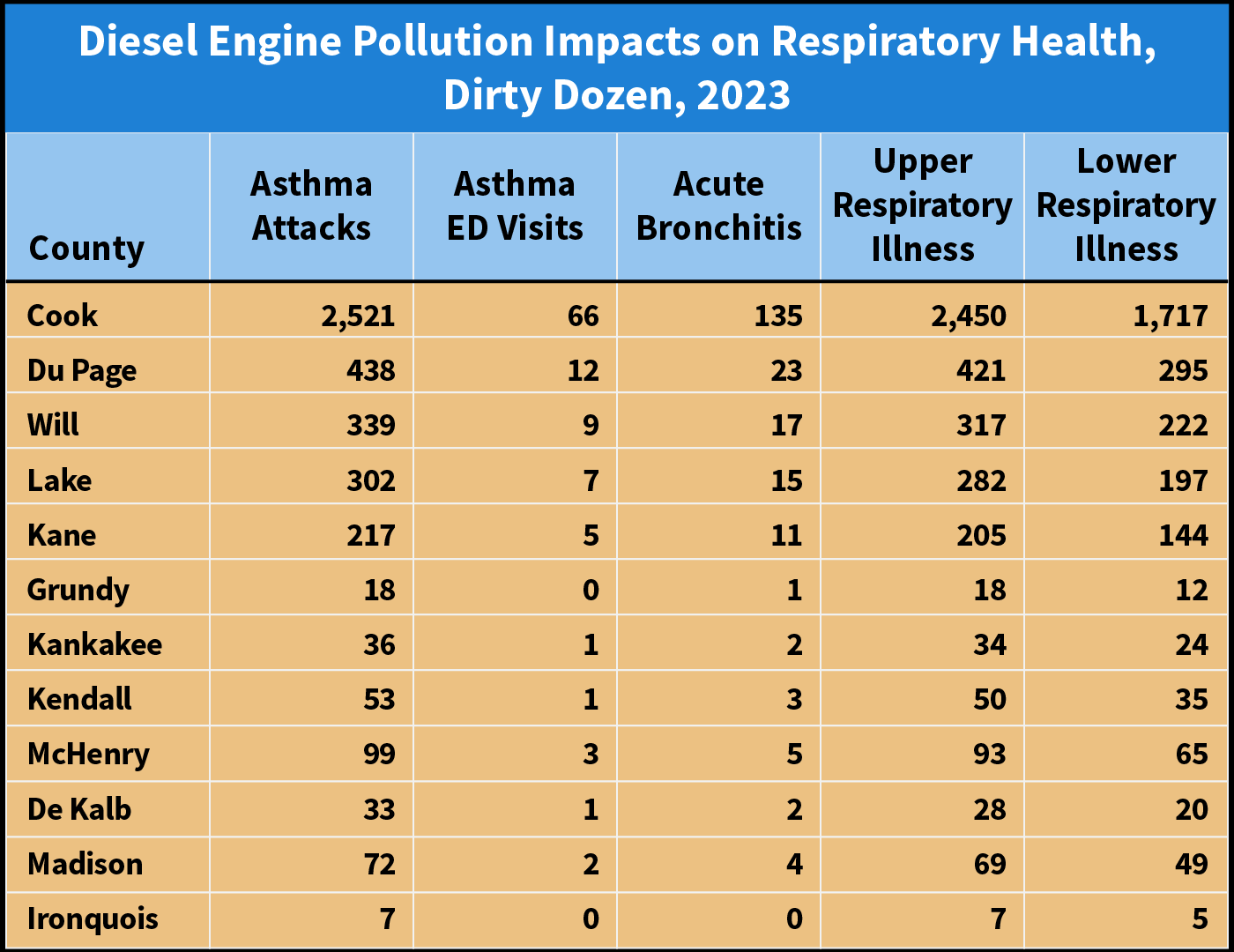
ELECTRIC CARS AND TRUCKS SAVE LIVES.
Illinois can no longer ignore its tailpipe pollution problem.
-

Number of Illinoisians who die yearly because of diesel pollution each year.
-

What diesel pollution exposure costs Illinoisans annually.
-

138,000 asthma attacks annually that could be prevented with clean cars and trucks.
Twelve counties in Illinois, called “The Dirty Dozen,” in a 2022 Respiratory Health Association report, are in the top 9% of polluted counties nationwide.
Cook County is in the top 1% of polluted counties in the United States. The impacts of tailpipe pollution on health, economics, and communities in Illinois are enormous.
Zero-emission trucks, buses, cars and delivery vans are Illinois's transportation future. We must accelerate the transition from polluting fossil fuel engines to affordable, reliable, zero-emissions electric vehicles.
We need the right policies in Illinois to improve health and grow our economy. Our community-focused, diverse and growing coalition is working to get Governor Pritzker and the Illinois Pollution Control Board to understand the importance of tailpipe emissions reductions in Illinois - we need more clean cars and trucks on our roads. We must establish ways to reduce emissions in new fossil fuel trucks that will continue to be sold, hauling all the benefits for Illinois residents along with them.
WHY?
For Equity & Health
Zero-emission cars and trucks will help families living in “diesel death zones.”
For Jobs and the Economy
Zero-emission cars and trucks improve the bottom line and create good jobs.
For the Climate
A transition to zero-emission cars and trucks solves a major climate problem
HOW?
Zero-Emission Cars and Trucks
This is a historic opportunity to slash pollution with strong policy.
TIME FOR ILLINOIS TO TAKE CONTROL OF OUR FUTURE.
Illinois is one of the most populous states in the country, and is a major transportation hub for the movement of people, goods, and services from place to place. This also makes Illinois one of the worst states in the country for tailpipe pollution. Our toxic air contributes to climate change while harming the health of children, the elderly, low-income, and BIPOC communities most, who are disproportionately located next to highways, heavy industry sites, and other pollution hot spots.
We can continue to lead with innovations and policies that protect Illinois lungs from pollution.





